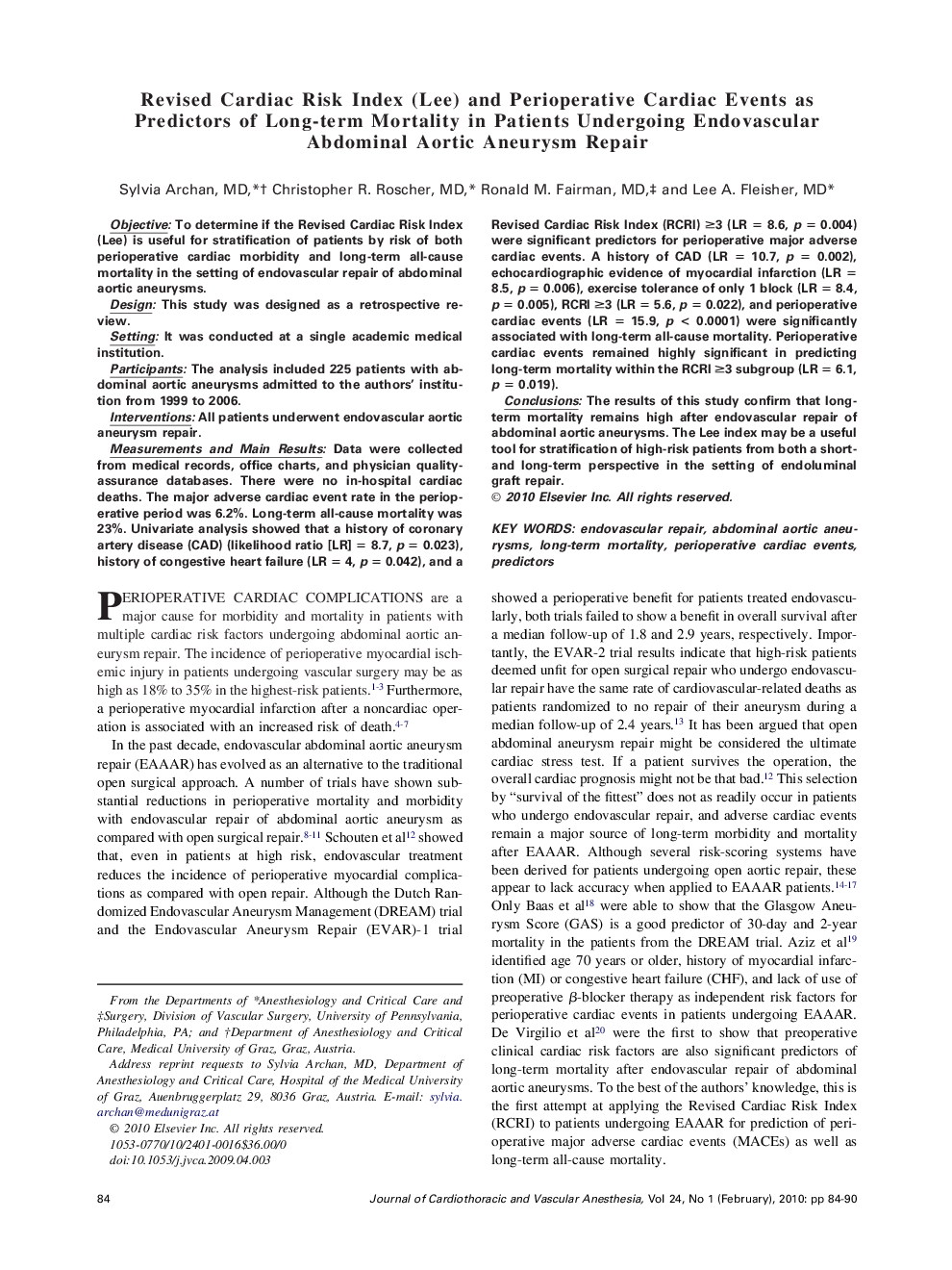| Article ID | Journal | Published Year | Pages | File Type |
|---|---|---|---|---|
| 2761817 | Journal of Cardiothoracic and Vascular Anesthesia | 2010 | 7 Pages |
ObjectiveTo determine if the Revised Cardiac Risk Index (Lee) is useful for stratification of patients by risk of both perioperative cardiac morbidity and long-term all-cause mortality in the setting of endovascular repair of abdominal aortic aneurysms.DesignThis study was designed as a retrospective review.SettingIt was conducted at a single academic medical institution.ParticipantsThe analysis included 225 patients with abdominal aortic aneurysms admitted to the authors' institution from 1999 to 2006.InterventionsAll patients underwent endovascular aortic aneurysm repair.Measurements and Main ResultsData were collected from medical records, office charts, and physician quality-assurance databases. There were no in-hospital cardiac deaths. The major adverse cardiac event rate in the perioperative period was 6.2%. Long-term all-cause mortality was 23%. Univariate analysis showed that a history of coronary artery disease (CAD) (likelihood ratio [LR] = 8.7, p = 0.023), history of congestive heart failure (LR = 4, p = 0.042), and a Revised Cardiac Risk Index (RCRI) ≥3 (LR = 8.6, p = 0.004) were significant predictors for perioperative major adverse cardiac events. A history of CAD (LR = 10.7, p = 0.002), echocardiographic evidence of myocardial infarction (LR = 8.5, p = 0.006), exercise tolerance of only 1 block (LR = 8.4, p = 0.005), RCRI ≥3 (LR = 5.6, p = 0.022), and perioperative cardiac events (LR = 15.9, p < 0.0001) were significantly associated with long-term all-cause mortality. Perioperative cardiac events remained highly significant in predicting long-term mortality within the RCRI ≥3 subgroup (LR = 6.1, p = 0.019).ConclusionsThe results of this study confirm that long-term mortality remains high after endovascular repair of abdominal aortic aneurysms. The Lee index may be a useful tool for stratification of high-risk patients from both a short- and long-term perspective in the setting of endoluminal graft repair.
